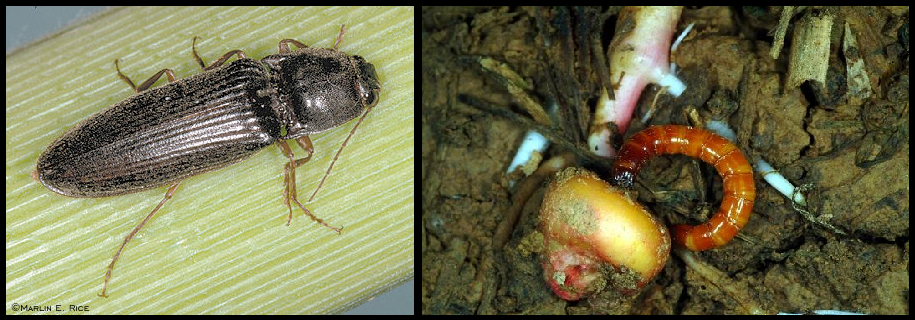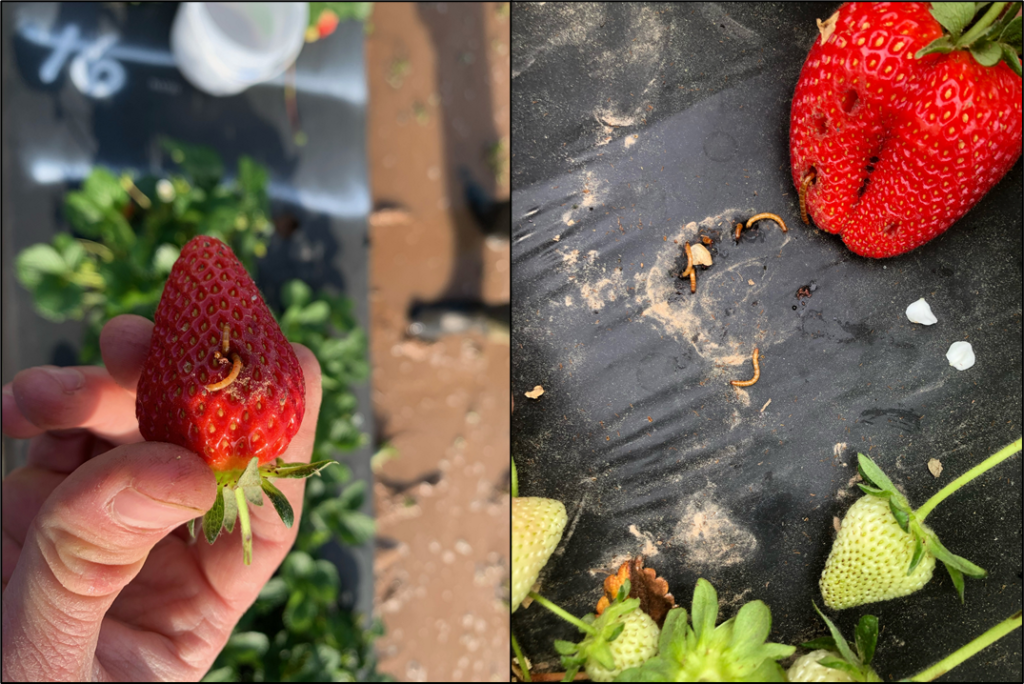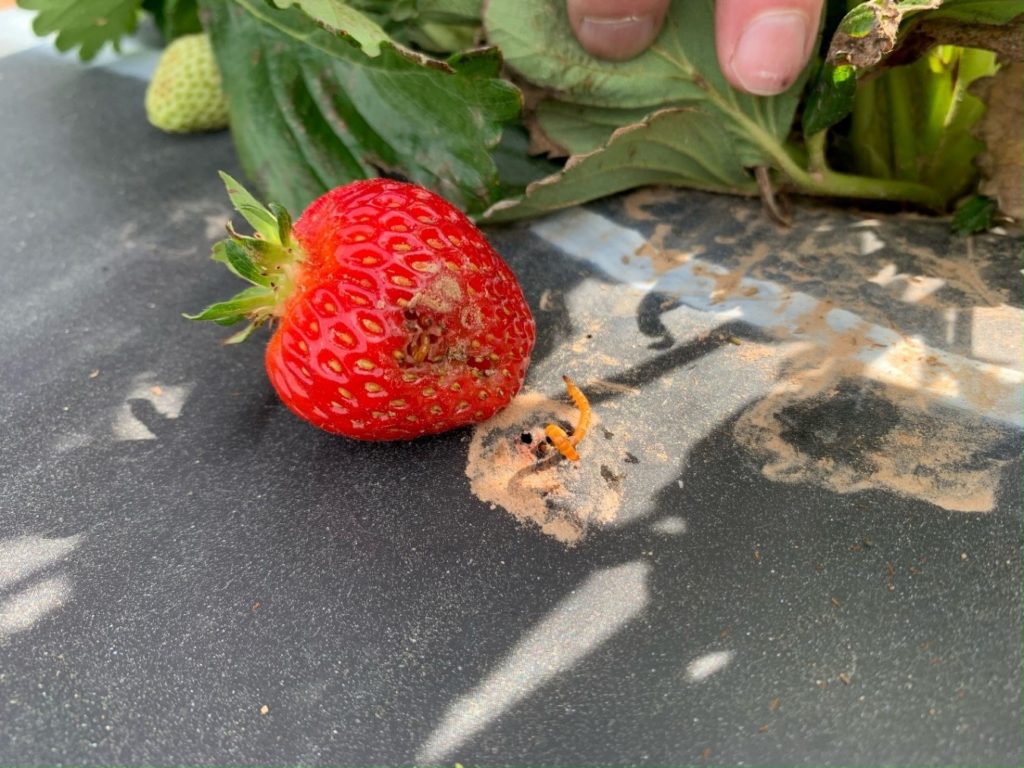Aaron Cato
Wireworms are an uncommon, soil-dwelling pest that feed on seeds and developing seedlings, as well as the roots and underground stems of plants. While uncommon, wireworms can be a serious pest of many seeded annual crops and especially of root and tuber crops such as sweet potato. Most berry growers probably aren’t too familiar with wireworms or other soil-dwelling insect pests as most of our small fruits are transplanted with sizeable root balls and are perennial. However, 2021 was a weird year we found out that these small soil-dwelling larvae happen to love strawberries as much as we do.
What’s a wireworm?
Wireworms (Figure 1) are soil dwelling larvae of click beetles that almost exclusively feed under the soil-line. It’s not uncommon to see wireworm adults feeding on or around strawberries or other crops, but they don’t cause appreciable damage of any kind that will affect profitability. Wireworm larvae are brown, smooth beetle larvae that vary from ½ to 1½ inches in length when fully grown. Wireworm larvae live 2-6 years in the soil where they prefer to feed on seeds and developing seedlings, as well as the roots and underground stems of grasses.

Wireworm larvae sporadically cause appreciable damage to many different crops. This damage presents in the form of stand loss in seeded crops, as wireworm feeding deteriorates seeds and small plants. Damage is most common in grass crops, especially where grass crops are grown many years in a row. Additionally, any crop that follows sod, corn, or sorghum are at a heightened wireworm risk. This risk is obviously highest in seeded crops and the risk will decrease as transplant and root ball size increases.
Why are we talking about strawberry?
Reading the info above I’m really not making a case for wireworms to be an issue in strawberry, and I think that’s why most people reading this probably haven’t had to deal with it. The issue with wireworms and most other insects (especially those that dwell in the soil) is that we end up with bad years where we find out they feed on more than we give them credit for. This is exactly what happened in our strawberry plots in 2021. As can be seen in Figure 2, wireworms will feed on strawberry fruit, and we incurred significant losses that would have warranted insecticide applications. Although these insects generally feed below ground, we observed larvae chewing through the plastic to get to ripe strawberries. In every case these larvae were feeding on fruit that were laying directly on the plastic, which suggests that they were sensing the location of ripe fruit through the plastic. In no instance did we observe any larvae searching for fruit, they were either inside of fruit feeding or still under berries in the soil (Figure 2 and 3).

Why were they an issue?
Predicting insect pests is a hefty task in normal years, but we think we understand enough about wireworm biology to hazard an educated guess on why we saw so much damage. First, wireworms prefer grass crops and you should always expect increased numbers in the soil after crops like corn, sorghum, or an area previously in sod. A sorghum sudan summer cover crop was planted on this ground within the last two years. Second, wireworms move up and down in the soil profile depending on moisture. During harvest we experienced many rains and couldn’t get the row middles drained properly, as exhibited with the standing water visible in Figure 2. It is possible that a high water table was enough to force wireworms up the raised beds, while not hurting the strawberry plants. Finally, there are likely more factors in play here than the previous two mentioned. We usually see years where soil pests are worse than others and it can be hard to predict. In all likelihood these conditions may not line up for you unless you are coming in behind a grass crop and get the perfect weather. In other words, it would be incredibly difficult to predict the issue we observed.
How would you manage wireworm in strawberry?
The first question when considering management of wireworms is whether it is necessary for you. In 2021 we lost significant amounts of strawberry in our plots, but this situation was unique and I suspect most people will never encounter issues, nor should they look to use preventive insecticides. However, if this begins to become a problem on your farm, it may be worth checking out the risk factors mentioned above.
Controlling wireworms requires forethought and isn’t achievable during harvest. Cultural practices can be used to prevent most issues from occurring. Try not to go directly from sod or large grasses into strawberry, and be sure to practice some heavy tillage if you are. Wireworms can stick around a few years after a grass crop, but numbers are generally significantly higher the year after the grass crop was present. Drip applications of Imidacloprid containing products are going to offer the best control but have a 14-day phi. The timing of the application would need to be after the plants are off and growing, but 14 days before the first picking is planned.
